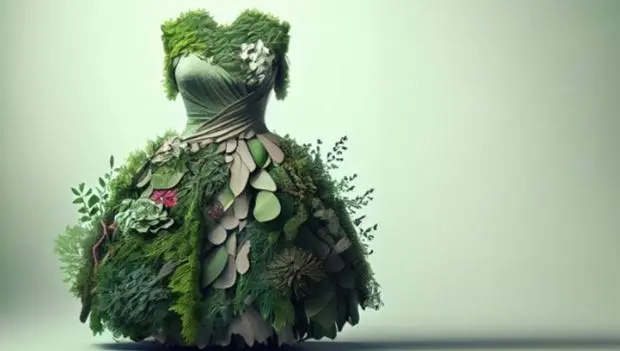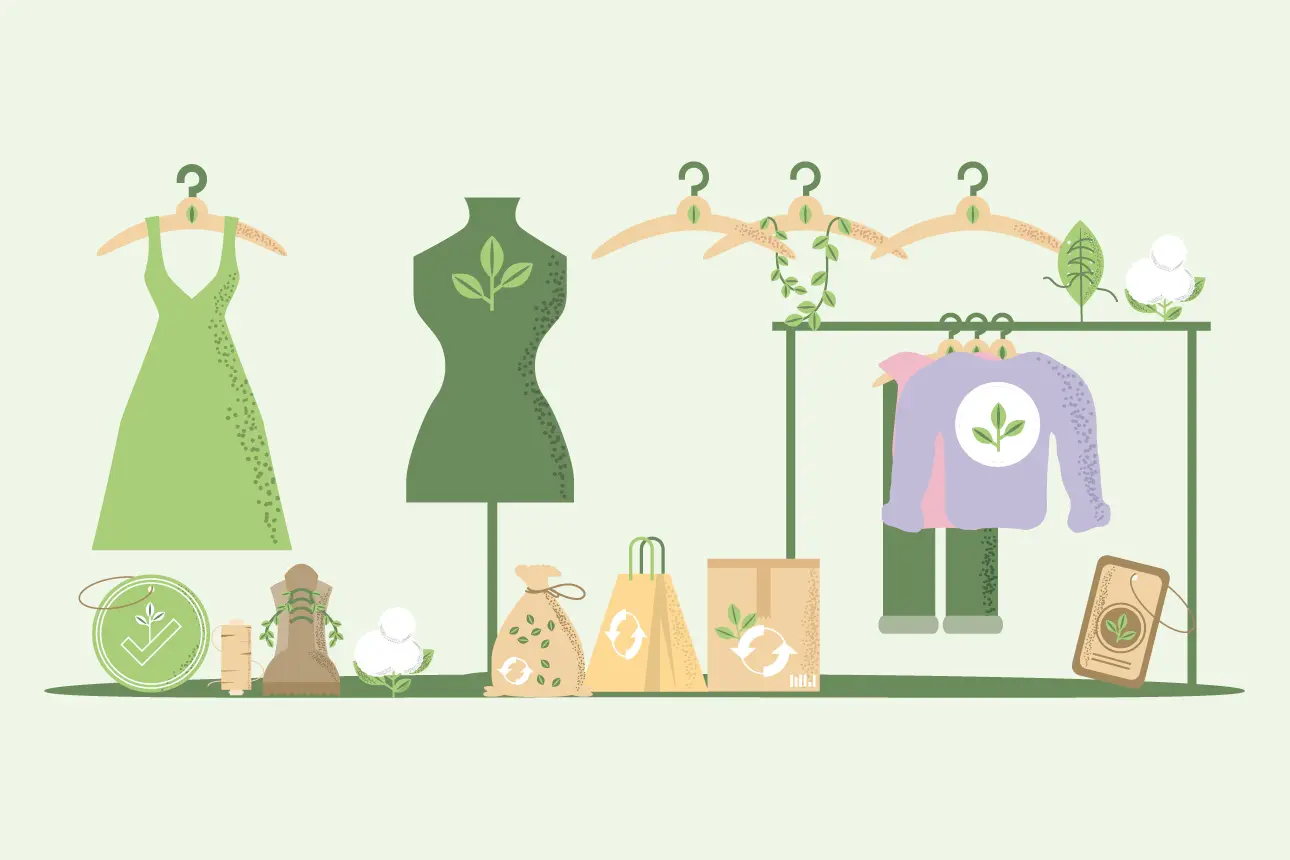Fashion Trends and Social Responsibility: The Intersection
25/04/2024 2024-04-25 17:50Fashion Trends and Social Responsibility: The Intersection
Fashion Trends and Social Responsibility: The Intersection
Fashion trends and social responsibility are two major contributors to keeping a sane balance between every day changes and having the change on a normal level. The fashion field is in the middle of a huge change. But, it’s not always about what would look good or nice; it is also about how the product is manufactured. People have finally realised that every purchase they make it is not just supporting the employees working but also how the company or the brand will support the planet.
Putting it in simple words: you should try to ensure your clothes benefit everybody.
MIT Sloan Management Review
This article focuses on the intersection of fashion and social responsibility. We will define social responsibility within this context and explain why social responsibility is important in fashion. From workers’ rights to environmental sustainability, we will look at different areas where the industry can be more socially responsible.
So let’s get started!
What is social responsibility in fashion trends?
Responsibility towards society, also known as social responsibility, includes ethical fashion Social responsibility in fashion includes all ethical practices that are safe for the environment and have positive effects on all parts of society and the environment, which increases the impacts.

3D Look
Social responsibility in fashion business is like a module that integrates social awareness and environmental safety. Corporate social responsibility for social and environmental concerns in their brand operations, as well as maintaining relationships with company stakeholders.
Some examples of CSR activities include:
- Supporting non-profits;
- producing eco-friendly products;
- reducing waste and pollution;
- conserving resources;
- offering equal opportunities and workers’ rights;
- investing in communities.
The fashion industry’s response to social responsibility and fashion trends can be seen in three aspects: sourcing ethics, reduction in environmental footprints and improvement of working conditions. This implies the creation by companies of, for instance, recycled fibres or environmentally friendly dyes, together with finding solutions to minimise waste and water usage too.
Furthermore, many fashion labels, like H&M, Zara, Uniqlo, etc., have signed up for The Fashion Pact, which is a global initiative aimed at cutting down carbon emissions from this sector.
The Rising Trend of Sustainable Fashion as CSR
Brands invest a lot in building a positive image because they know there are multiple ways to attain this objective. Today’s customers, especially millennials, require brands to not only look good on the outside but also put forward tangible proof of their societal and environmental benefits.
 Bulbapp.io
Bulbapp.io
In the world of fashion, many brands have been at the forefront of corporate social responsibility in fashion, using different media platforms to amplify their CSR initiatives. This increased focus on social responsibility is indicative of evolving consumer and shareholder expectations.
1. Consumer Expectations and CSR:
A 2015 Global CSR Study revealed that almost ninety percent of consumers may boycott companies for bad business practices, while ninety-one percent expect them to respond responsibly to an array of social and environmental issues.
2. Industry Efforts Towards Sustainability:
From leading fast fashion retailers like H&M and Zara to sportswear giants such as Nike, Adidas, and luxury CSR fashion brands like LVMH, these companies are all making active efforts towards reducing carbon emissions, improving sustainability, and changing their traditional linear business models into circular ones.
3. Collaborative Commitments
For example, before the G7 Summit in Biarritz, France in August this year, Kering led 32 other fashion brands, including Adidas, Hermes Burberry, among others in pledging the reduction of its effect on the environment. Adidas, as one notable fashion brand, has made it public about its CSR fights by teaming up with other brands and NGOs so that it can reduce its overall footprint.
4. Recognition and Brand Enhancement
Outstanding collaborations like Stella McCartney’s Adidas collection have been driven by the zero waste concept: lessening or eliminating waste during production processes. “Stella McCartney” knows well about being socially responsible.
Similarly, recycled ocean plastics were used in producing different product ranges through a partnership between Adidas and Parley for the Oceans, which includes an entire shoe solely developed out of reclaimed plastic materials.
These partnerships have received recognition for their purpose as well as having enhanced Adidas’ branding image. In pursuit of promoting CSR campaigns; Adidas has employed excellent PR strategies that effectively communicate their commitment to social and environmental responsibility.
Why is social responsibility important in fashion trends?
 The Environment
The Environment
According to ethical fashion, social responsibility is a vital component, that acts as a learning principle for sustainable as well as ethical practices by fashion brands globally.
1. Workers being treated ethically:
Social responsibility ensures fair treatment of the labourers involved in the entire process of producing garments. This takes into account equitable payment, reasonable time spent working, and lack of exploitation.
2. Environmental Impact:
Fashion production can have grave consequences on the environment such as pollution, depletion of resources, and destruction of habitats. By considering social responsibility, fashion brands may minimize their ecological footprint through eco-friendly materials usage, less waste generation, and resource conservation at large.
3. Consumer Awareness:
Contemporary consumers are increasingly becoming aware of the social and environmental effects that arise from their buying decisions. Brands practicing social responsibility can easily win customers who value ethics and sustainability in products, resulting in increased sales revenues due to brand loyalty among buyers.
4. Brand Reputation:
Socially responsible fashion brands create positive images that may lead to better competitive positions and long-term success. On the other hand, if they neglect social responsibilities, their reputations are destroyed; thus consumer confidence is lost hence negative publicity.
5. Legal Compliance:
In many countries, there are regulations on labor practices, environmental standards and product labeling in the fashion industry. Fashion companies become compliant with these regulations by embracing social responsibility and this helps them avoid legal penalties and reputational damage.
6. Global Supply Chains:
Fashion requires complex global supply chains that often span multiple countries with different legal and cultural contexts. Social responsibility ensures ethical conduct throughout these supply chains thus fostering accountability and transparency.
For good treatment of employees, reducing pollution, keeping up with consumers’ needs, building reputation, meeting legal obligations, and encouraging transparent business operations across the fashion industry CSR globally—social responsibility is what counts in essence.
Choosing social responsibility priorities will enable a fashion company to positively impact society and nature for now and future while securing its long-term survival in operation.
Weaving The Threads Of Our Future
The fabric of the fashion industry is woven from social responsibility threads, which makes a story about progress and opportunity.
As corporate social responsibility in fashion shows itself as it indicates major changes in consumer expectations. Shallow gestures no longer satisfy consumers; instead, they expect genuineness and accountability from their brand.
In combining style with sustainability in fashion seamless future fashion aspires to be both self-expression and a tool for positive change. Let us go on threading our life’s purpose and love into our future while realizing how important an impact each decision can make on this planet we share.
Frequently Asked Questions (FAQs)
1.What is social responsibility in fashion?
In fashion, social responsibility involves adopting sustainable yet durable practices to lessen the negative effects on society as well as the environment while increasing positive give backs.
2.How is social impact affecting fashion?
Fashion’s social impact encompasses fair treatment of workers, environmental conservation, and community engagement.
3.What is the importance of sustainable fashion?
Sustainable fashion is crucial for reducing the fashion industry’s environmental footprint and addressing social issues like labour rights and resource depletion.













